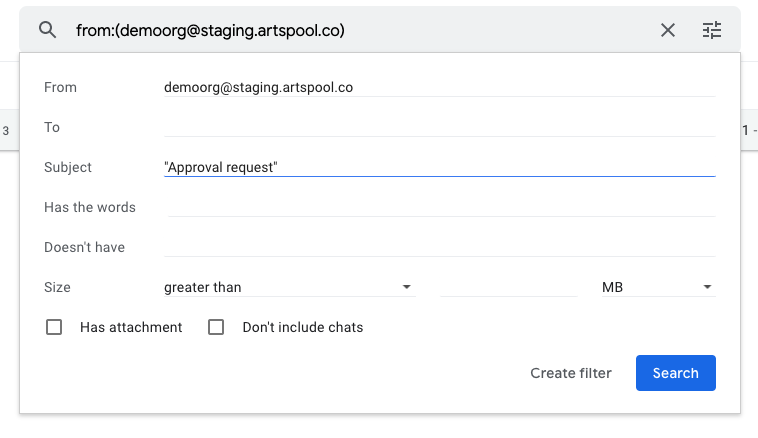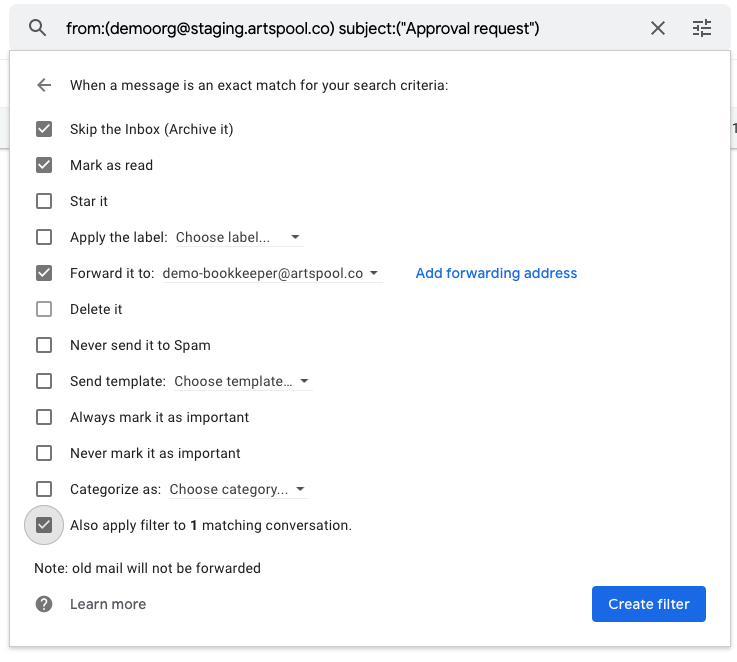Becoming a member
Guide for members
Community guidelines
The basics
What ArtsPool does
What ArtsPool does: an overview
Financial Maintenance services
Financial Operations services
Workforce Administration services
Other services
Requesting changes to ArtsPool's scope of services
ArtsPool: an introduction
Training quick links
Requesting work from ArtsPool
Suggested titles, descriptions, and content for tasks
Requesting digital signature processing for a document
Share important events or deadlines with ArtsPool's calendar
Membership communication guide
New hire onboarding
Submitting a new hire task in the ArtsPool app
Guidance on creating offer letters
Employee benefits data management
Employee Payroll Setup: A to Z Guide
Independent Contractor and Employee Definitions
Paying employees
Paying Employees and Approving Payroll
Employee reimbursements
Processing per diem
ArtsPool Retirement Plan
Actors Equity Payroll with a PEO
Revenue and expenses
Managing petty cash
How to submit receipts to ArtsPool
Submitting bank deposits
How to code expenses and respond to clarification requests
Requesting payment for a bill
Xero-compatible check stock
Grants and contributions
Corporate insurance
CentrallyHR training
CentrallyHR General training
Updating your CentrallyHR password
Homescreen: Understanding My Personal Info
Changing your name with ArtsPool
Homescreen: Understanding My Actions
Homescreen: Understanding My Forms
CentrallyHR training for employees
CentrallyHR training for payroll admin
Accessing reports in CentrallyHR
Unlocking employee accounts in CentrallyHR
Verifying I-9 Forms
Approving timesheets in CentrallyHR
Understanding payroll and CentrallyHR
CentrallyHR: approve time entries
Homescreen: Understanding Employee Management
Submitting Timesheets
Submitting and approving employee time off requests
Uploading and downloading an employee document in CentrallyHR
Payroll FAQs - a troubleshooting guide
Downloading Pay Statements
Submit time off request in the ArtsPool app
CentrallyHR mobile app
Download W2 from payroll in Centrally HR
Paying independent contractors
Compliance
SAM.gov: The Federal System for Award Management
Providing annual sexual harassment prevention training and materials
Understanding conflict of interest disclosures
Board actions for New York nonprofits
Understanding corporate policies
Fiscal control stopgaps: what NOT to do
How to read a balance sheet
Technology
The ArtsPool app
Managing your ArtsPool app user account
Getting started with tasks
Working with your task list
Searching for tasks
Commenting on a task
Adding a document to a task
Adding people to tasks
Member pages in the ArtsPool App
Keyboard shortcuts
Reassigning requests
Tasks and privacy
Approving a batch of requests
Google Drive
Setting up a Google account
Google Drive tips and tricks
Syncing Google Drive files to your desktop
Exporting a Google Sheet to PDF
Getting started with Google Sheets
Gmail
Email like a champ with Gmail keyboard shortcuts
Submit tasks at lightning speed with email templates
Creating a Gmail filter
Adding a forwarding address to Gmail
Security
Data security guide for members
Security on macOS
Data Security Policy
1Password account setup
1Password account management
1Password basics
Importing passwords into 1Password
Privacy Policy
Other technology resources
Working with documents
Governance and other goodies
Governance
Service agreements
Summary of changes to Terms of Service
Terms of Service
Dispute and Indemnity Summary
Annex A: Pricing and Billing
Annex B: Member Service Contact List
Annex C: Member Services List
Annex D: Onboarding Procedures
Annex E: Operating Agreement
Annex F: Privacy Policy
Annex G: Data Security Policy
Annex H: Limitations of Liability and Indemnification
Annex I: Dispute Resolution
Annex J: Improvement Process for Members not in Good Standing
Annex M: General Legal Provisions
Annex K: Termination Provisions
Annex L: Offboarding Procedures
Annex N: Defined Terms
External partners and vendors
Guidelines for a Successful ArtsPool-Auditor Partnership
Selection of vendors, consultants, software, and tools
Professional development resources
- Knowledge Base
- Technology
- Gmail
- Creating a Gmail filter
Creating a Gmail filter
Gmail filters allow you to keep your inbox in order by automatically labeling, marking as read, deleting, forwarding, and doing lots of other fun things to emails that match certain patterns. Follow…
Gmail filters allow you to keep your inbox in order by automatically labeling, marking as read, deleting, forwarding, and doing lots of other fun things to emails that match certain patterns. Follow the steps below to set up a filter.
- Search for an email of the type you want to filter (e.g., an invoice, a receipt, an approval request, etc.) and click the filter icon to the right of the search bar. Alternatively, you can select the meatball menu (three dots) at the top right of any email and select Filter messages like this.
- Next, you need to decide on what information will be the most useful when setting up the filter. This information must be consistent so that future emails of the same type continue to be filtered. On the other hand, you want it to be unique enough so that you don’t accidentally forward an incorrect email. The combination of the sender email address and a consistent portion of the subject line is usually a reliable filter.

- If you have filters with similar subject lines but need to be processed differently based on the email body content, you can also add keywords or phrases from the email body in the Has the words field. It's best to put key phrases in quotes to maximize accuracy.
- Click Search to test your filter logic. You should see search results that match the email you are trying to filter. If you notice a lot of unrelated emails, you may need to refine your filter.
- Click the Filter icon to the right of the search bar to return to your filter settings. Adjust your settings if needed, then click Create filter.
- The next screen will have several options for actions to take on the emails that match the filter criteria. For example, in addition to forwarding to a specific email address, you can also skip the inbox, mark the email as read, and apply a label to the email so it is automatically archived without any manual work. You can also select the option at the bottom to apply the filter to existing emails that match the filter criteria. Once you have confirmed the options you want, click Create filter.

How did we do?
Submit tasks at lightning speed with email templates
Adding a forwarding address to Gmail